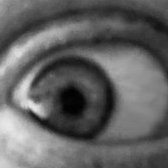Greetings, All - this is my debut, so please be gentle!
After many years of messing about I decided to get serious and tackle the stash. First up is the Revell 1/32 Stuka which I understand is actually Hasegawa plastic. I used the Eduard Interior & Exterior PE, the Eduard masks, the HGW fabric seat belts and Quickboost resin (exhausts, propellor blades & machine gun barrels). The interior is a mini-project on its own and I discovered that (in this scale), some thicknesses of guitar strings do a very good job of resembling hoses and cables in terms of texture & bendability (new word). The exterior came together reasonably easily, with Vallejo's plastic putty used from time to time to make good my own clumsiness in jointing. I found the seating of the canopy pieces on the fuselage frames quite problematic, and fitting the rear-facing machine guns through the tiny opening while preserving the minute PE gun sights on the ends of the barrels tested the limits of my patience.
I have always appreciated the look of the eastern front Luftwaffe aircraft that received field-applied "whitewash" which subsequently wore off. As a tip: this is a great way to ease into model building and painting as you have multiple opportunities to cover your mistakes!
These two reference images describe the look I was going for:
Because I was going to cover them up anyway, I used some old Xtracrylix paints for the upper surfaces (RLM70 & RLM71) and for the undersides. I find Xtracrylix quite tough to use as it ends up splotchy within 90-odd seconds of use and the only way forward is to regularly remove the airbrush's (Iwata Neo-CN) nozzle cap and clean up. I thinned the paints with Xtracrylix thinners, without which I find the paints unusable. After some hairspray and because I wanted a very fine misted-on mottled whitewash cost on the upper surfaces, I reached for the more reliable Tamiya acrylic flat white which went went on like a dream. Planning ahead saved the day here, as I had done a trial piece before and figured out that I could only do so much of the hairspray/white/wait/scrubbing at a time.
The Revell decals scored a solid 3/10 (thick and clunky carrier film) - I will not use these again in a hurry unless there is no alternative.
In hindsight, I would self-criticize the build by finding these opportunities for improvement:
1. I should have flattened the tires.
2. I should have got the aerial cable between the canopy and tail on, but I had already weakened the mast part by bending it so wasn't going to risk it.
3. I got the pitch of one the propellor blades wrong, but tried to hide it by orienting the offending blade downwards and therefore making it hopefully less visible.
4. Golden rule for yellow fuselage bands No. 1: never, never, never use the decal, and always paint it on instead, The bigger the decal, the greater the opportunity for disaster.
5. Golden rule for yellow fuselage bands No. 2: never, never, never try to paint yellow over a dark camouflage colour - it won't work unless you do at least 10-15 coats. Instead, pre-spray a white base under the yellow. Simple rules and I broke both of them, then had to take the long road to recover as best I could.
The Revell kit is fantastic value for money with lots of detail and it kept me busy for many months. If I had to do it again, I would leave out the Eduard Exterior PE but still use the rest of the after-market goodies I threw at it.




